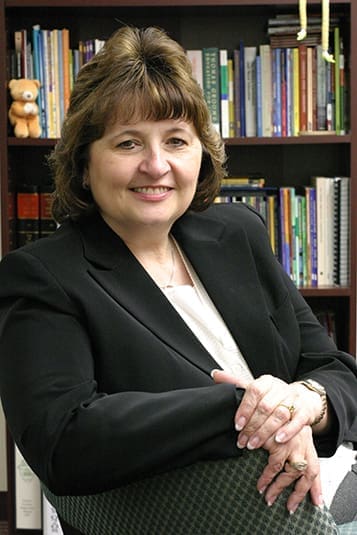The Financing Of Catholic Education
By DIANE STARKOVICH, Ph.D., Commentary | Published August 16, 2012
As superintendent of schools I am frequently asked why the cost of tuition in the Archdiocese of Atlanta remains higher than in many other parts of this country. As we continue our efforts to address the affordability and accessibility of Catholic education in North Georgia, a brief discussion of the financing of our schools seems appropriate.
The history of this nation illustrates the Church’s commitment to Catholic education. From the efforts of the Catholic bishops to establish the Church’s own system of schools to those of the many dedicated sisters, brothers and priests who provided the majority of educators in Catholic schools through the late 1960s, thousands and thousands of students have been formed in our faith and educated to take their place in society through the sacrificial giving of parishioners, parents, and those employed in Catholic schools.

Diane Starkovich
In a 2005 document, “Renewing Our Commitment to Catholic Elementary and Secondary Schools in the Third Millennium,” the U.S. bishops affirmed, “It is the responsibility of the entire Catholic community to continue to strive toward the goals of making our schools available, accessible, and affordable to all Catholic parents and their children, including those who are poor and middle class.”
Pope Benedict XVI in his address to Catholic educators at The Catholic University of America in 2008 called for the support of the entire Catholic community so that Catholic schools can be accessible to people of all social and economic strata.
All Parishes Support Catholic Schools
In the Archdiocese of Atlanta, every parishioner supports Catholic education. No one parish, even if it was the original founding church of a school, takes direct financial responsibility for any one school. Instead, all parishes contribute to a common fund, which is administered by the chief financial officer for the archdiocese to assist with tuition assistance in all archdiocesan schools. Each parish’s contribution to this fund is based on its annual offertory.
Across the U.S. the average parish investment (subsidy) to its Catholic school is approximately 27 percent. In many parts of this country, parishes are investing in their Catholic schools at rates as high as 50 percent of parish income. This model of funding Catholic schools has proven to be an unsustainable model and one of the primary causes for Catholic schools closing at such high rates each year.
The school assessment to parishes in the Archdiocese of Atlanta varies by parish, but the highest rate is slightly less than 13 percent of ordinary income. It is important to note that 20 percent of our parishes are exempt from the school assessment tax because ordinary income does not reach the minimum threshold for assessments; these parishes are generally found in the more rural areas of our archdiocese. Through the generosity of our parishes and their parishioners the Archdiocese of Atlanta was able to award approximately $3.1 million in block grant assistance to our schools to provide financial aid to qualifying Catholic families for the upcoming school year.
Best Practices Keep Tuition Lower
We continue to implement best practices in our schools in order that we keep them as affordable as possible. Tuitions are set at a minimum of 80 percent of the cost to educate; families who can afford the cost of a Catholic education generally pay the entire amount. To assist families who desire a Catholic education for their children and need financial assistance, we require that all families demonstrate financial need through a third-party analysis of the family’s finances. Once need is established, our schools award financial aid through a variety of resources—block grants, local financial aid earmarked in the school’s budget, SB10 funding, GRACE Scholars, Inc., and a variety of local scholarship funds and fundraising efforts. In total, approximately $6.2 million in financial assistance has been awarded to families in our 18 archdiocesan Catholic schools for the 2012-2013 school year.
School Employees Receive Fair Wages
While moving toward cost-based education, we have also implemented a standard salary scale and a common benefits’ program. Our employees certainly do not earn what they might in other private or government run schools—however, our salary scale and benefits place them in the top 3-5 percent of all Catholic educators’ compensation packages in this country. We believe in investing in the best Catholic educators possible so that we can maintain the strong faith formation and outstanding academic excellence found in our schools. Cost-based education and just salaries are the primary reasons our schools’ tuition appears to be higher than in other parts of the country. Through implementing these and other best financial practices in our schools, we hope that they will remain viable and healthy for many, many generations to come.
GRACE Efforts Help More Students Enroll
With the sacrificial giving of our parishioners and the investment parents make in their children’s Catholic education, we remain committed to be good stewards of the funds entrusted to us. At the same time, we have increased our efforts to provide assistance to poor and middle class families so that no child is denied a Catholic education, if at all possible.
This fall, 654 GRACE scholarship students will be attending Catholic schools in the state of Georgia when classes resume. Many of these families would never have dreamed that a Catholic education would be possible for their children. I invite you to visit the website for our student scholarship organization, www.gracescholars.org, and learn more about how you can direct your tax dollars to allow more needy families to make this dream possible for their children as well.
May God bless all students returning to school this fall with hearts full of joy and minds eager to learn.